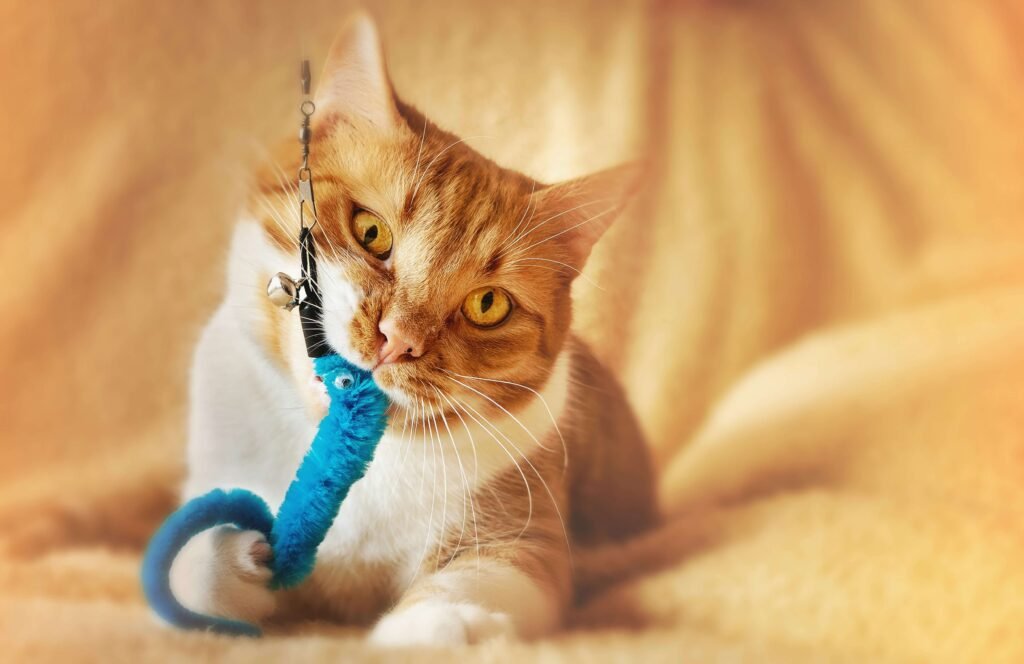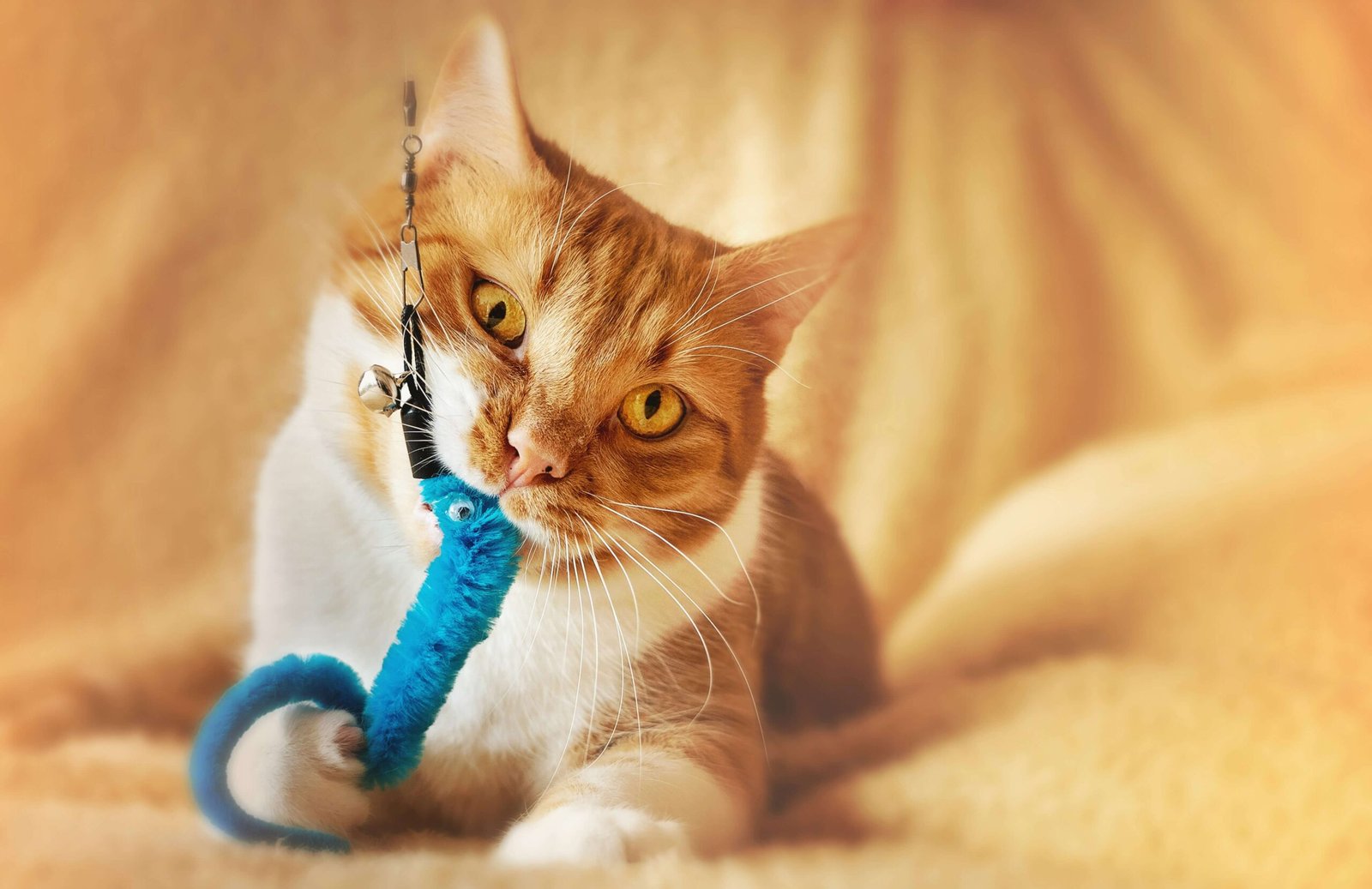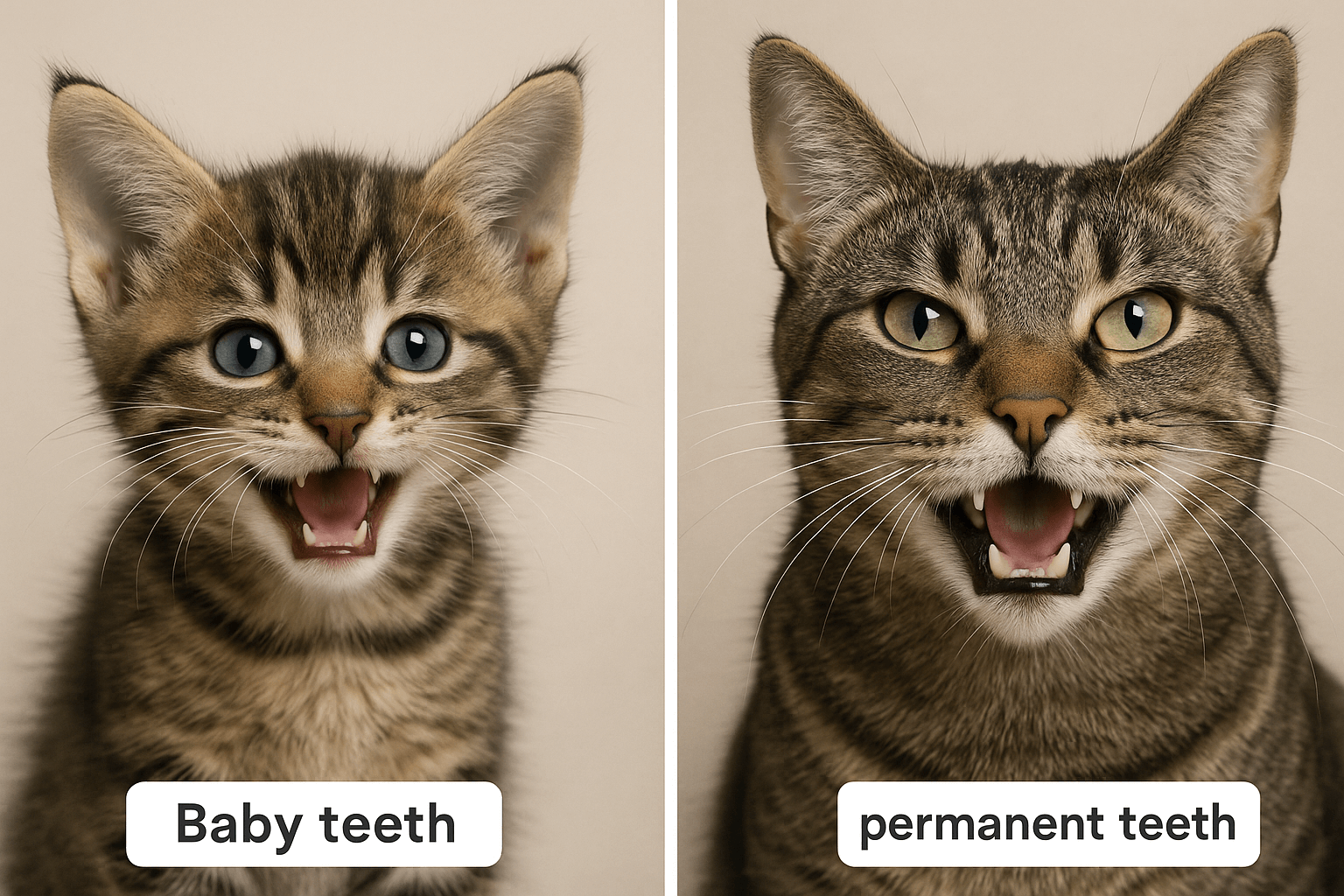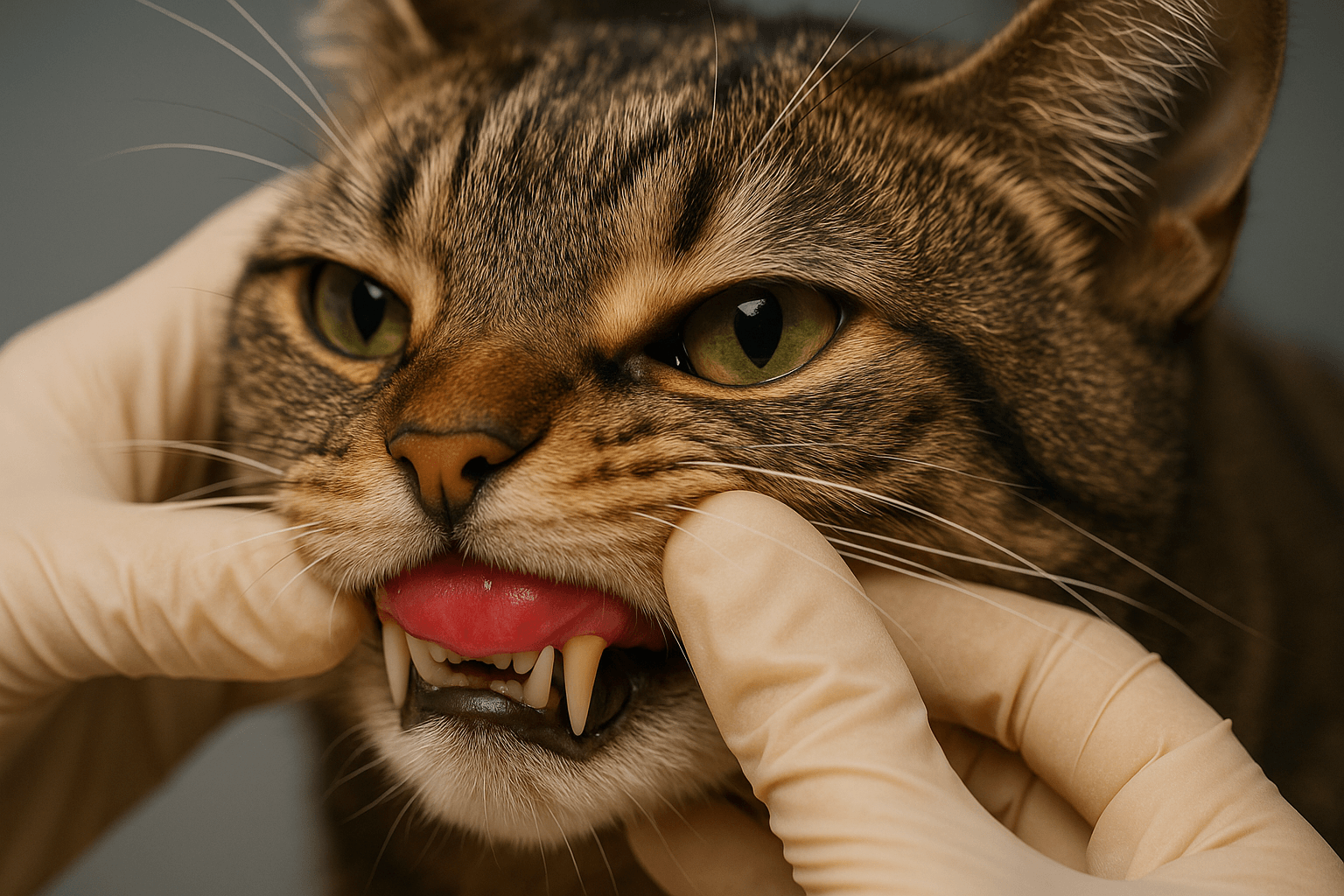Why Does My Cat Meow With a Toy in Her Mouth? Decoding Feline Behavior
If you’ve ever caught your cat meowing while proudly parading around with a toy in her mouth, you’re not alone. This quirky behavior often leaves pet owners scratching their heads and wondering what it means. Is she trying to communicate something? Showing off her prized possession? Or simply having fun? Understanding why your cat engages in this adorable habit can deepen your bond and help you better meet her emotional needs.
In this blog post, we’ll explore the fascinating reasons behind this behavior, uncover what your cat might be trying to tell you, and offer tips on how to respond. By the end, you’ll have a clearer picture of your feline friend’s unique way of expressing herself.
Possible Reasons Why Your Cat Meows With a Toy in Her Mouth
Cats are complex creatures with a variety of ways to express themselves. When your cat meows while carrying a toy, it could mean several things. Here are some common explanations for this behavior:
Hunting Instincts:
Cats are natural hunters, and carrying toys mimics the act of bringing prey back to the den. The meow may signal excitement or pride in her “catch.”Seeking Attention:
Your cat might be trying to get your attention by showing off her prized toy. The meow is her way of saying, “Look at what I’ve got!”Playful Communication:
Some cats use toys as props during playtime and vocalize to invite you to join in the fun.Bonding Behavior:
Bringing you a toy and meowing can be a sign of affection. It’s her way of sharing something she values with you.Boredom or Loneliness:
If your cat feels understimulated or lonely, she might use toys and meows to engage with you and seek companionship.
Understanding these motivations can help you respond appropriately and strengthen your connection with your furry companion.
How to Respond to Your Cat’s Behavior
When your cat meows with a toy in her mouth, it’s important to respond in a way that acknowledges her needs and reinforces positive behavior. Here are some suggestions on how to handle this situation:
Engage in Play:
If your cat seems eager to play, grab the toy and initiate a fun game of chase or fetch. This will satisfy her hunting instincts and provide mental stimulation.Offer Praise and Rewards:
Reward her with gentle praise or a treat when she brings you a toy. This encourages her to continue sharing and bonding with you.Provide Extra Toys:
Rotate her toys regularly to keep her entertained and prevent boredom from setting in.Spend Quality Time Together:
Dedicate more one-on-one time to play or cuddle with your cat, especially if she seems lonely or attention-seeking.Observe Patterns:
Take note of when and how often this behavior occurs. Identifying patterns can help you understand her underlying motivations.
By responding thoughtfully, you can ensure your cat feels heard, valued, and loved.
Check this guide 👉Why Is My Cat Meowing at the Door? Best 7 Expert Tips!
Check this guide 👉Why Does My Cat Meow in the Litter Box? Best 7 Tips!
Check this guide 👉Why Does My Cat Not Meow? Best 7 Expert Care Tips!

Behavior | Possible Meaning |
|---|---|
Meowing with a toy in mouth | Seeking attention or expressing pride |
Carrying toys to a specific spot | Mimicking hunting instincts |
Dropping toys near you | Inviting you to play or bond |
Vocalizing during playtime | Excitement or playful communication |
Hiding toys and meowing | Marking territory or showing ownership |
Other Common Cat Behaviors Explained
While meowing with a toy in her mouth is a unique behavior, cats exhibit many other habits that can seem puzzling. Here are some additional behaviors and their possible explanations:
Kneading Blankets or Pillows:
This behavior stems from kittenhood when kittens kneaded their mother’s belly to stimulate milk flow. As adults, it’s often a sign of comfort.Chattering at Birds:
Cats chatter when they see birds or other prey, likely out of frustration or excitement at not being able to reach them.Headbutting You:
Known as “bunting,” this is a sign of affection and a way for your cat to mark you as part of her territory.Purring Loudly:
While purring usually indicates contentment, it can also be a self-soothing mechanism during stressful situations.Staring at Walls or Corners:
Cats have keen senses and may notice small movements or sounds that we miss, leading to seemingly random staring.
Understanding these behaviors can give you deeper insight into your cat’s world and strengthen your relationship.
Tips for Encouraging Positive Toy Behavior
If your cat enjoys carrying toys and meowing, there are ways to encourage this behavior in a healthy and constructive manner. Here are some tips:
Choose Interactive Toys:
Opt for toys that mimic prey, such as feather wands or mice, to tap into her hunting instincts.Create a Toy Rotation System:
Keep her interested by introducing new toys periodically and storing others away to avoid boredom.Set Up a “Den” Area:
Designate a cozy spot where she can bring her toys, mimicking the safety of a den in the wild.Reward Calm Behavior:
If she tends to vocalize excessively, reward her when she’s quiet to encourage balanced behavior.Supervise Playtime:
Spend time playing with her daily to ensure she gets enough exercise and mental stimulation.
By fostering positive interactions with toys, you can enhance her well-being and reduce unwanted behaviors.
Understanding Your Cat’s Vocalization Patterns
Cats communicate through a variety of sounds, and understanding their vocalizations can help you better interpret their needs. Here are some common types of meows and what they might mean:
Short, Soft Meows:
These are often friendly greetings or requests for attention.Loud, Insistent Meows:
This could indicate hunger, frustration, or a desire for something specific.Chirps or Trills:
Often used to get your attention or express excitement, especially during play.Low-Pitched Growls or Hisses:
These sounds typically signal fear, discomfort, or territorial behavior.Prolonged Howling or Yowling:
This may suggest distress, confusion, or even an underlying health issue.
By paying attention to the tone, frequency, and context of your cat’s meows, you can better meet her needs and strengthen your bond.
Signs Your Cat Is Simply Having Fun
Sometimes, your cat’s behavior with toys is purely playful and not tied to deeper instincts or emotions. Here are signs that she’s just enjoying herself:
Energetic Pouncing:
If your cat is leaping and pouncing on toys, it’s a clear sign she’s in play mode.Carrying Toys Around Gently:
This indicates she’s treating the toy like a cherished object rather than prey.Vocalizing During Play:
Cats often chirp or meow while playing as a way to express excitement.Returning Toys to You Repeatedly:
This suggests she’s inviting you to join in the fun and share the experience.Relaxed Body Language:
A wagging tail or relaxed posture shows she’s comfortable and enjoying herself.
If these signs are present, rest assured that your cat is simply reveling in the joy of playtime.
How to Address Excessive Toy-Carrying Behavior
While carrying toys and meowing is usually harmless, excessive behavior might indicate unmet needs or overstimulation. Here are ways to address this:
Increase Mental Stimulation:
Provide puzzle feeders or interactive toys to keep her mind engaged and reduce boredom.Establish a Routine:
Set aside regular playtimes to give her a predictable outlet for her energy.Limit Access to Certain Toys:
Rotate toys to maintain novelty and prevent her from fixating on one item.Redirect Her Focus:
Use treats or other activities to shift her attention away from repetitive behaviors.Consult a Veterinarian:
If the behavior seems compulsive or is accompanied by other unusual signs, seek professional advice.
By addressing excessive behavior proactively, you can ensure your cat remains happy, healthy, and well-balanced.
Frequently Asked Questions About Cats and Toys
Why does my cat carry toys to my bed?
Your cat may view your bed as a safe space and bring toys there to mimic bringing prey back to the den.
Is it normal for my cat to meow loudly while playing?
Yes, meowing during play is common and often a sign of excitement or engagement.
Should I take the toy away if she keeps meowing?
Not necessarily. Instead, try engaging her in play to redirect her energy positively.
Why does my cat drop toys at my feet?
This behavior is likely an invitation to play or a gesture of affection.
Can excessive meowing indicate a problem?
While occasional meowing is normal, persistent vocalization could signal stress, illness, or unmet needs. Consult a vet if concerned.
Final Thoughts: Celebrating Your Cat’s Unique Personality
Every cat has her own quirks and ways of communicating, and meowing with a toy in her mouth is just one example of how fascinating felines can be. By understanding the reasons behind this behavior and responding thoughtfully, you can nurture a stronger bond with your furry friend. Remember, cats thrive on love, attention, and enrichment, so providing plenty of opportunities for play and interaction is key. Whether she’s showing off her latest “catch” or inviting you to join in the fun, cherish these moments—they’re a testament to the special connection you share.
Amoxicillin for Cat UTI: Best 7 Expert Tips! Discover safe usage, dosage guidelines, and expert advice on treating feline urinary tract infections effectively with amoxicillin.
Understanding Cat Cancer Treatment: Best 7 Expert Tips! Discover expert advice on managing feline cancer, from early detection to treatment options, ensuring your cat’s health and comfort.
Cat Baby Teeth vs Permanent Teeth: Best 7 Expert Tips! Discover expert advice on feline dental development, teething stages, and lifelong oral care to keep your cat’s teeth healthy and strong.
Cat Swollen Gums: Best 7 Expert Tips! Discover causes, symptoms, and treatment options for cat swollen gums. Learn how to prevent and care for your feline's oral health effectively.





